Common Injuries in Cricket & Prevention and Treatment
Fitness is of utmost importance in any sport you play and it serves as the benchmark of how successful you as a cricket player can be. It not only encompasses your physical strength, but also all other aspects like agility, flexibility, endurance and mental resilience. Having a fit body will not only allow you to give your all on the field and win matches for your team, but also help you have a prolonged career. But there's one demon dancing in the dark that can ruin this, and those are the injuries that you might pick up playing cricket. Cricket injuries can be a significant roadblocks in an athlete's career, causing pain, setbacks, and sometimes even permanent damage. Just look at what happened to Jofra Archer. He had the ability to win matches with the ball and could become one of England’s greatest ever bowlers, but due to his injuries, he could not continue to play, ruining what could have been a great cricketer career. Injuries not only hinder your game time but can also have long-term consequences on their performance and well-being.
Read More: Cricket Fitness Exercises and Workouts
Injuries in cricket have cost teams heavily around the world a number of times, with some amazing players being unavailable for some super important matches, which leads to frustration for everyone, the players, the team and the fans and supporters.
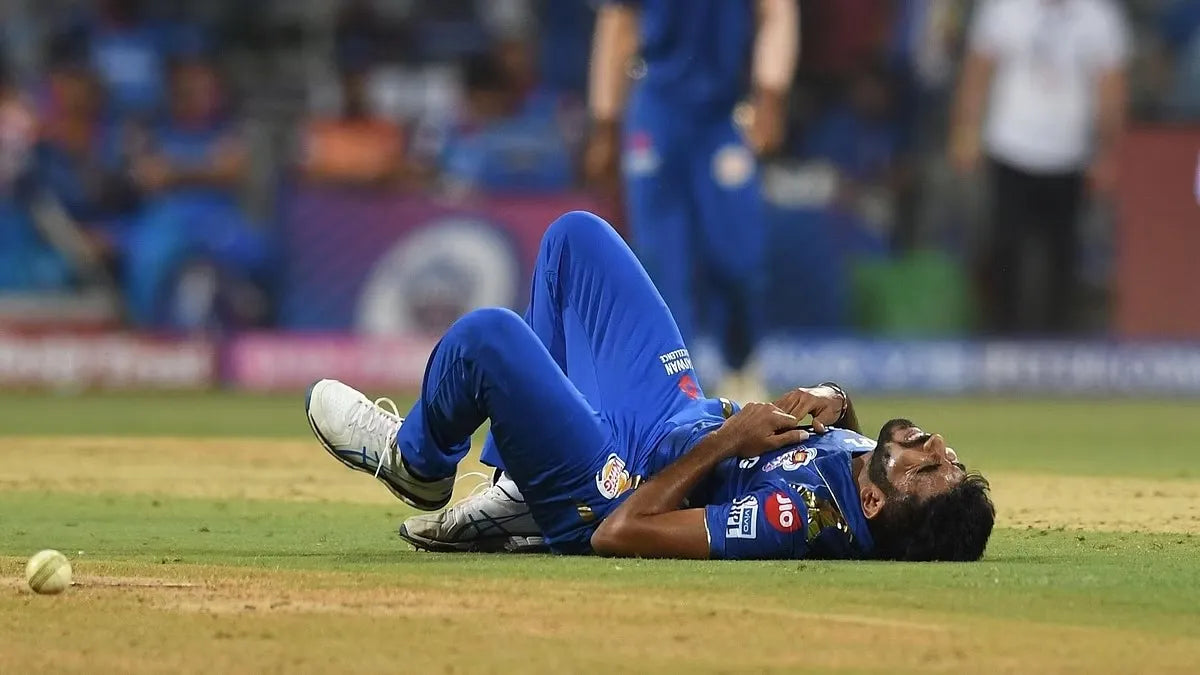
Credit: The Quint
If you’re an Indian Cricket Team fan or a Mumbai Indians fan, you must be very well acquainted with this, Jasprit Bumrah’s injuries have been costing both the MI and the ICT crucial matches. Bumrah because of his back was unavailable for selection in the T20 cricket world cup in 2022 in Australia and for the Mumbai Indians in the IPL 2023, where both the team did not perform well. He was one of the most important bowlers for the test side, but his absence cost us in the 2023 World Test Championship Final vs the Australian Team.
But what are these injuries? Why do they keep players away from playing crucial matches for their team?
ZAP will help you understand injuries in cricket better and how you can prevent injuries and provide the necessary aid and resources to hasten the recovery process.
Common Injuries in Cricket:
Injuries in Cricket can occur due to various reasons: a high amount of matches played, wrong technique, no proper recovery, bad stretching before a game and some due to unfortunate reasons as well. Also, the quicker and the shorter t20 format cause more and more injuries, due to high physical load on the players. You also get to see many players take a break, or sit out for some matches in an IPL season, the reason being fatigue. But at the same time, it makes you appreciate the players like Virat Kohli, MS Dhoni that have kept going strong all season playing more than 200 matches in the format!
- According to the ZAP’s on field research, bowling, fielding, and wicket keeping are responsible for the majority of injuries, accounting for about of all injuries.
- Interestingly, younger players under 24 years of age are more prone to overuse and bowling injuries. Lower limb and leg pain makes up a more than half of all injuries. Back injuries, upper body and neck injuries are also very common.
Now, let’s go into the specifics and help treat each injury:
Head Injuries - Worst Injury in Cricket:
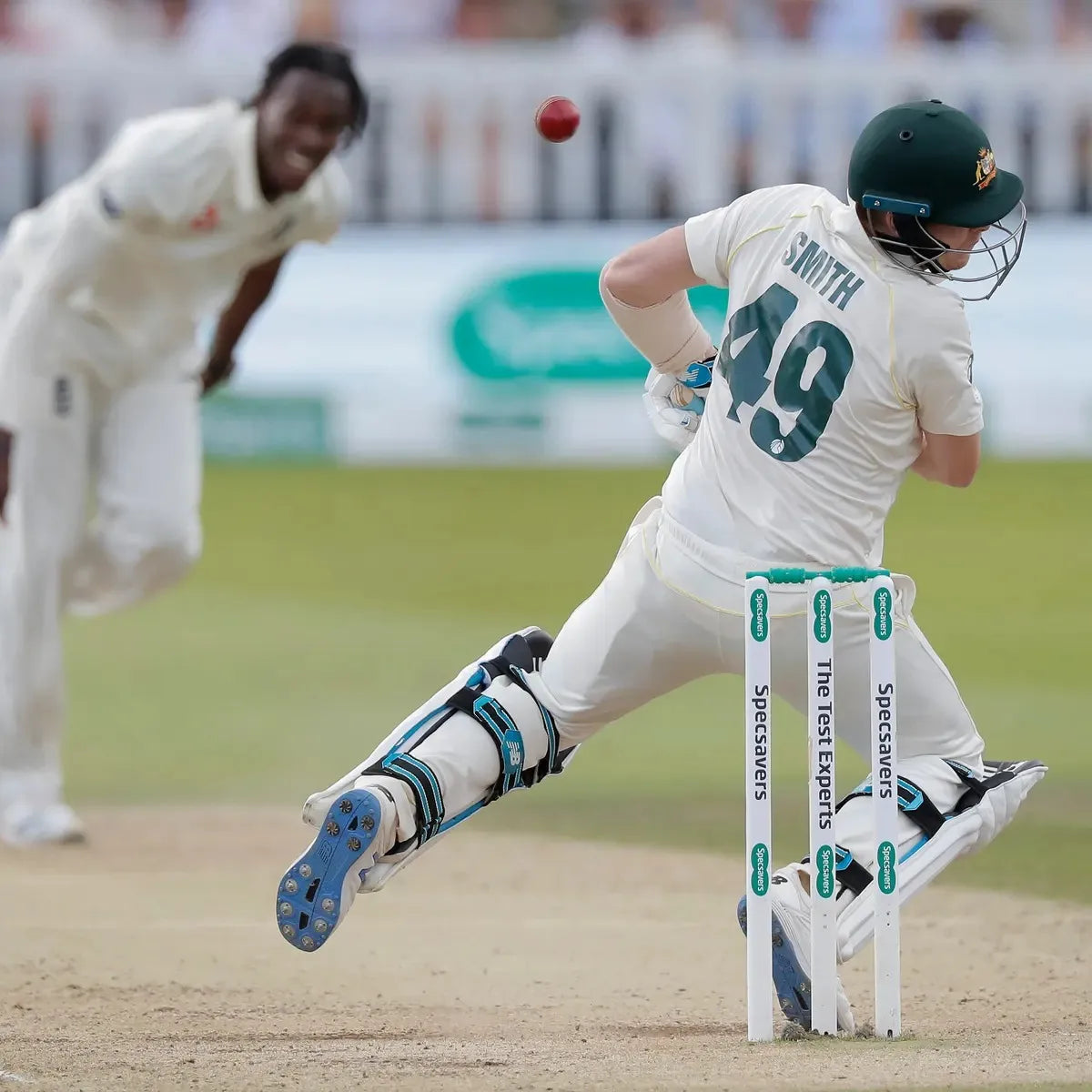
Credit: The Guardian
- In older times, cricket was not the sport for batsmen that it has evolved to be today. It was majorly for the bowlers where they dominated the games.
- The equipment was not good enough to provide players with ultimate protection.
- Especially the helmets, the helmets did not have a proper grill that protected batsmen from the rising deliveries. Every batsman who was not Sunil Gavaskar or Sir Vivian Richards and who never wore a helmet, had to face the wrath of the bowlers bowling the fierce bouncers.
- One sad case for the entire sporting fraternity happened when Phil Hughes, a young Australian Batter got struck by the ball on his helmet, and the impact was such that he never woke up again.
- Preventions against this can only be a very well made helmet, which can handle impacts of upto 160 Km/hr from the leather ball.
Mark Boucher Eye injury:
Another example is Mark Boucher, who had to give up playing because of an eye injury. Boucher was an excellent wicket keeper, but one day, nothing he could have done could have stopped what happened. Without a helmet, he was standing close to the stumps, keeping for a spinner, when the ball hit the stumps, sending bails off to a flight which landed right into his eyes. Mark Boucher's eye injury was irreversible and he was forced to retire after that accident.
Upper Body Injuries:
The upper limbs consists of the hands, elbows, and shoulders. They are essential for carrying out the game's primary actions like holding the bat, bowling, throwing the ball, and maintain the wicket; they are the game's workhorses. Bowlers most frequently have a side strain injury in cricket while bowling. Fast bowlers often report experiencing a sudden onset, acute discomfort during a delivery on the side which is opposite their bowling arm. For these body parts to perform at their best and prevent injuries, proper technique and conditioning are essential.
Shoulders injuries in Cricket:
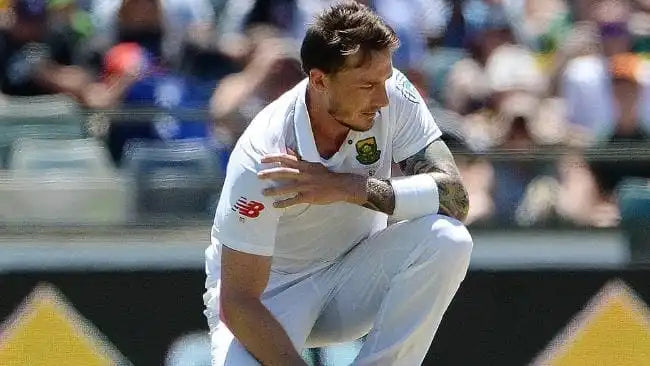
Credit: Praxis ortho care
- Shoulder injuries are a common problem for cricket players and a lot of you must have experienced shoulder pain after bowling. The repeated motion of throwing the ball can lead to injuries in the rotator cuffs. This type of injury is also seen in swimmers, tennis players, and even painters and decorators who perform repetitive overhead movements.
- Rotator cuff injuries can cause significant pain and discomfort, and if left untreated, can worsen over time.
Cricket shoulder injury treatment:
- Cricket shoulder injury treatment and prevention includes resistance exercises, such as Pilates, to increase their core stability and strength. Strengthening the rotator cuff and scapular stabilizers, as well as neural tissue mobilization techniques, can also help prevent shoulder mishaps.
- So, whether you're a professional cricketer or a weekend player, taking care of your shoulder health is crucial. Proper warm-up techniques and throwing techniques, combined with strengthening exercises, can help keep your shoulders healthy and ready for action on the field.
Elbow Injuries:
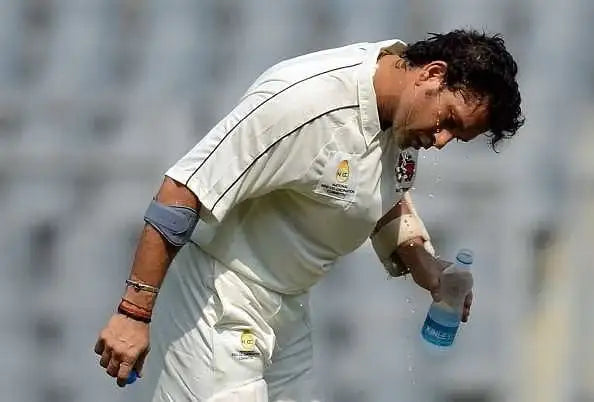
Credit: Cricreads
- The elbow is a crucial joint for cricket players, used in both batting and bowling. Unfortunately, poor techniques in either of these areas can lead to elbow injuries. Improper batting biomechanics, such as using a heavy bat or an incorrect grip, can result in lateral epicondylitis, a type of tendinitis commonly seen in batsmen.
- Similarly, improper bowling techniques, such as throwing with a straight arm or using excessive force, can lead to elbow injuries, such as ulnar collateral ligament (UCL) injuries.
Sachin Tendulkar Tennis Elbow:
Sachin Tendulkar had a tennis elbow injury by overuse of the lower part of the elbow, near the forearms which really put his playing career at risk. Imagine Sachin Tendulkar retiring only in the year 2006, he would not even have won the world cup trophy. But luckily, things went in the right direction for him and we saw achieve the title, The God of Cricket!
Elbow Injuries Prevention and Treatment:
- To prevent elbow injuries, wearing an elbow guard is a must. More than that, players should focus on proper technique and strengthening exercises. Working with a coach or trainer to correct any biomechanical issues can also be helpful. Using appropriate equipment, such as a bat that is the correct weight and grip, can also help prevent lateral epicondylitis.
- If an elbow injury does occur, rest, ice, and anti-inflammatory medications can help alleviate pain and swelling. In more severe cases, physical therapy or even surgery may be necessary. But with proper prevention techniques, cricket players can avoid elbow injuries and continue playing the sport they love.
Hands and Finger Injuries:
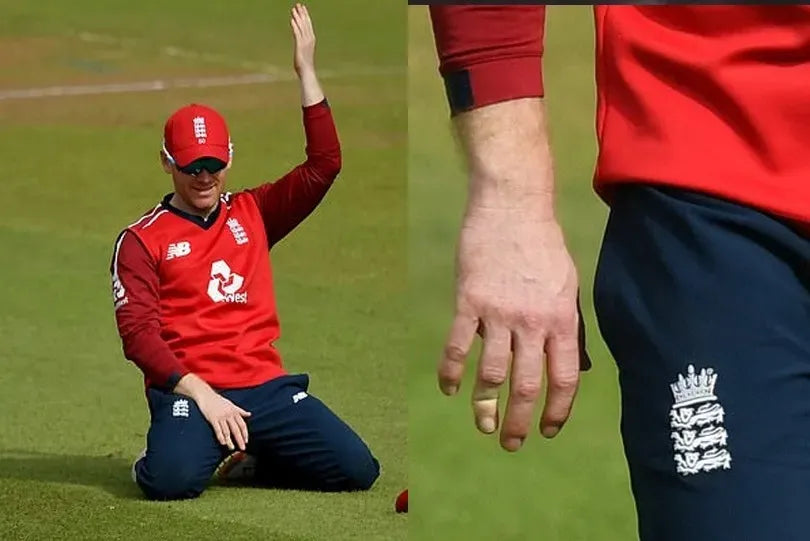
Credit: InsideSport
- The most important body part, when playing cricket, be it as a batsman, bowler, fielder or a wicket keeper.
- Every player is aware of the potential finger injuries in cricket, but there isn't much you can do about them. When batting, the fingers are extremely susceptible to being hit by a hard-bowled ball that hits your gloves. Or a shot that is hit extremely hard and comes directly at you while you are fielding in a tight space. It's the seam that rips through the skin in their palms of the bowlers and the uncomfortable gloves, and the quick catches that the keepers take that causes swollen and injured fingers. A Cricket ball bruise to your fingers or any other part of the hand can leave it swollen and result in a lot of pain.
- Every action on the field can result in a finger injury even if there’s any wrong technique used in any aspect of the game.
How to prevent and cure cricket ball injuries?
- The first thing you as a batsman or a keeper should do is invest in the best quality gloves, that protect your hands no matter how hard the ball is bowled or how difficult a catch is. Make ZAP your partner to provide you with the best wicket keeping gloves and batting gloves and feel safe, and continue playing with confidence.
For an extra layer of protection, wear a pair of inner gloves that add some more cushioning and comfort while batting and wicket keeping.
- As bowlers and fielder, it is necessary to practise proper technique and warm up exercises before every game, to avoid strains and sprains. Strengthening the hands through regular conditioning exercises can also help avoid injuries.
- Quick medical attention and adherence to a rehabilitation programme can help a player recover more quickly and prevent further problems in the event of an injury. Precautions should be taken to protect your hands and allow you to fully enjoy the game because, as the saying goes, prevention is always preferable to cure.
Read More: Fielding Tips and Techniques
Lower Body Injuries:
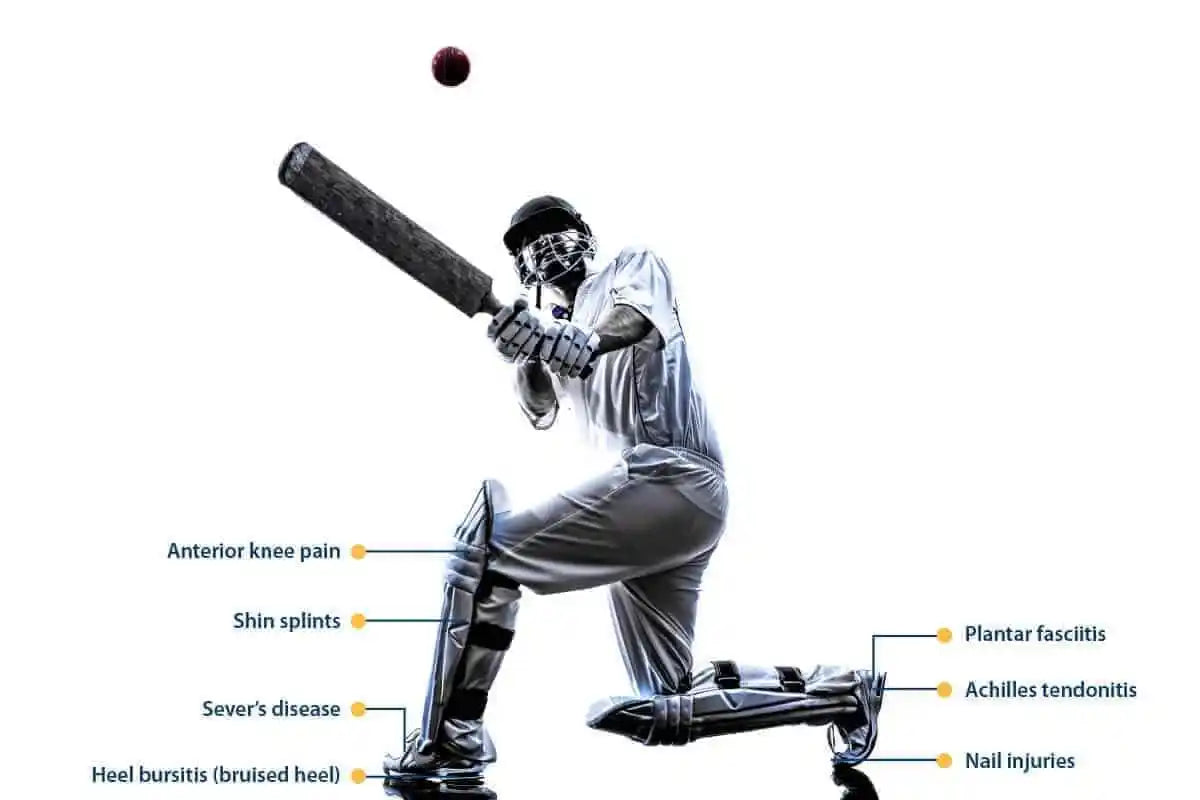
Credit: My FootDr Singapore
The part of your body below the waistline is the lower body and is essential in playing the sport and your performance. For bowlers, it is the strength and stability of their lower body that gives them the pace and accuracy to bowl deadly balls. Batsmen need strong legs, for quick footwork on the feet and effectively maintain balance while playing shots and running between the wickets. For fielders, it’s a no brainer why strength in legs is important. Lower body injuries can be one of the worst cricket injuries as it can take you a lot of time to recover, and even then your performance could not be as it was pre injury. Here are the common lower body injuries in cricket that are a hindrance in superior performance.
Hamstring Strains:
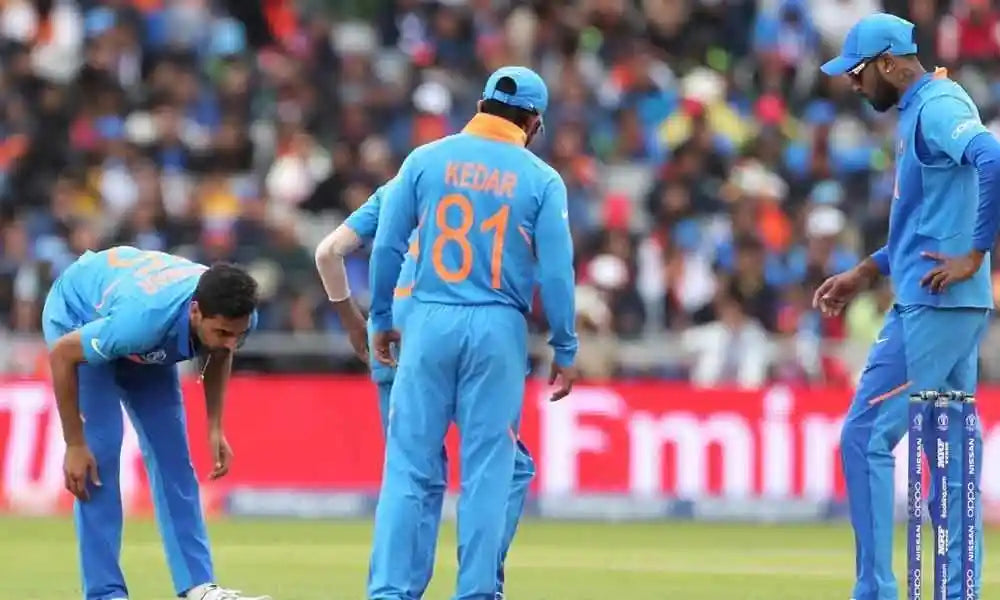
Credit: The Hans India
- Hamstring injuries occur when the muscles at the back of the thigh are stretched beyond their limits. A hamstring pull is a common injury in cricket and other sports and could occur because of explosive movements, like sprinting behind a ball while fielding or a quick change in direction like while taking a double.
Ankle Twist and Sprains:
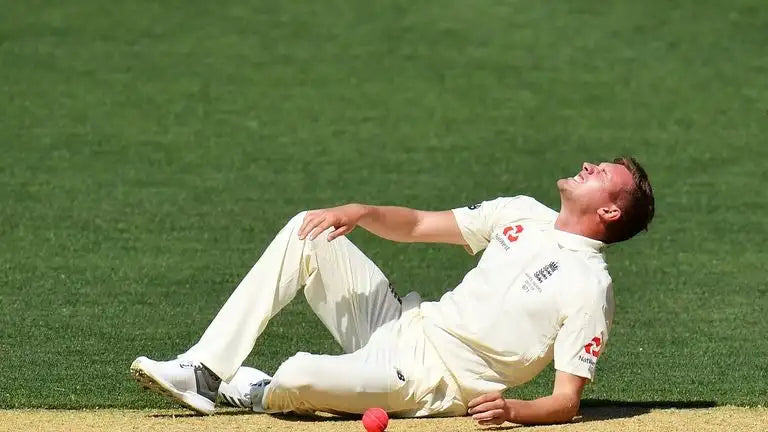
Credit: SkySports
- An ankle sprain occurs when the ligaments that support the ankle muscle are stretched beyond limits or are torn completely. An awkward landing after a jump while bowling or fielding can cause ankle sprains or twists.
Knee Injuries:
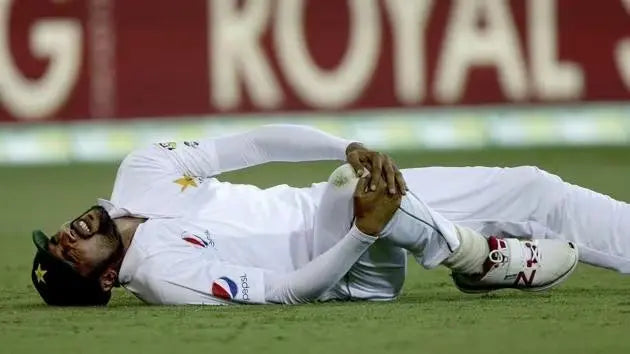
Credit: Hindustan Times
- Knee injuries in cricket are a common factor. You must have seen so many bowlers and batsmen needing knee surgery in recent times. These injuries, including the meniscus tears and ligament tears (such as ACL and MCL) can result from sudden stops, pivoting or from a direct impact on the knee.
ACL in Cricket:
The ACL (Anterior Cruciate Ligament) is a crucial ligament in the knee that helps stabilize the joint by connecting the femur (thigh bone) to the tibia (shin bone). ACL injuries are one of the worst in any sport and can occur due to various reasons like Sudden Stops and Changes in Direction, Landing Awkwardly, Overuse.
Groin Strains:
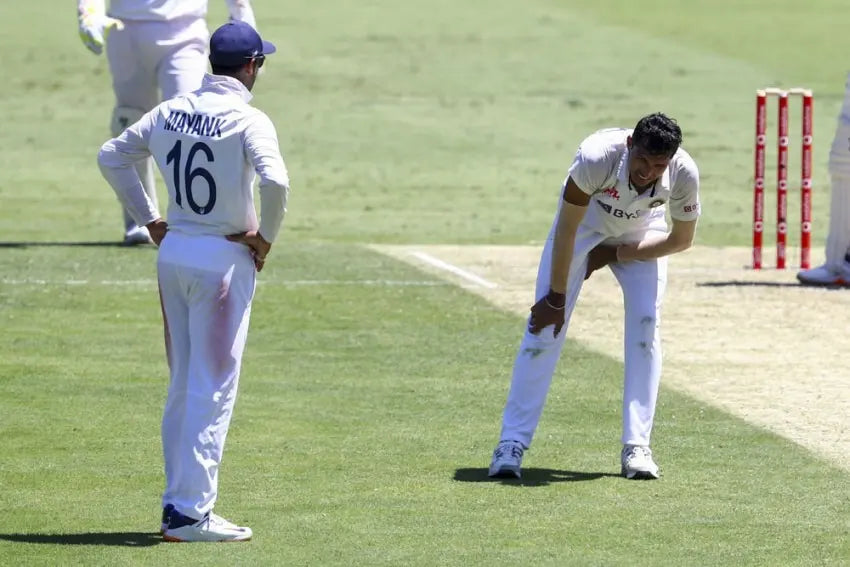
Credit: Outlook India
- Groin strains involve the muscles located on the inside of the thigh and can occur during explosive movements or sudden changes in direction. Batsmen and fielders are particularly prone to groin strains.
Shin Splints:
- Shin splints are characterized by pain along the shinbone (tibia), the part between your knee and your feet and are common in sports that involve repetitive running or jumping. Bowlers and fielders are highly susceptible to such muscle strains.
Stress Fracture:
- Stress fractures are the cracks that appear on the bones of the lower body and occur after an overuse or a repetitive motion or the same muscle.
Causes and prevention of lower body injuries in cricket:
Overuse and Fatigue
Overuse of muscles is one of the biggest reasons for injuries. Every muscle needs adequate time to recover and if there’s not enough rest, it can lead to pain and discomfort that’ll keep you away from the sport for some time.
Focus on rest and recovery after every match and don’t hop on to the field until your muscles feel completely fresh and ready for the next day. Taking an ice bath is a common way sportsmen use for their recovery process.
Poor warmup and stretching:
Warmup and stretching is like the lubricants that make everything extremely smooth. Not warming up well before a match can leave your muscles and body sore. So always begin with a warm up that increases your blood flow to the lower body and dynamic stretching workouts that improve your flexibility and range of motion.
Inadequate Conditioning:
Insufficient physical conditioning and strength training can lead to muscle imbalances and weaknesses, making your thighs, hamstrings, knees and your feet more prone to injuries.
Have a well rounded training routine that works upon all major parts of the lower body, including the quadriceps, hamstrings and glutes. Such a workout split will surely help in improving strength and stability.
Incorrect Biomechanics:
Not having the right method of doing something is always wrong. Flawed bowling motion, improper landing technique after jump, and getting into awkward shape while playing a shot can all lead up to injuries.
So work with a cricket coach at an academy that can help identify any flaws in your technique and rectify them before they cause any discomfort.
RICE method in injuries:
One of the most common methods for treating injuries is RICE (Rest, Ice, Compression, and Elevation). Following the RICE protocol is crucial when a cricket player gets hurt during a game or practise. First, rest and cover the damaged region to prevent additional harm. Apply ice or a cold pack right away to reduce pain and swelling. Compress the wound by putting it in an elastic bandage for added support. Elevate the injured area to reduce swelling. By minimising the effects of injuries on players' performance and overall cricket experience, this strategy helps to reduce pain, promotes healing, and assures players can return to the game more quickly.
Cricket Back Injuries:
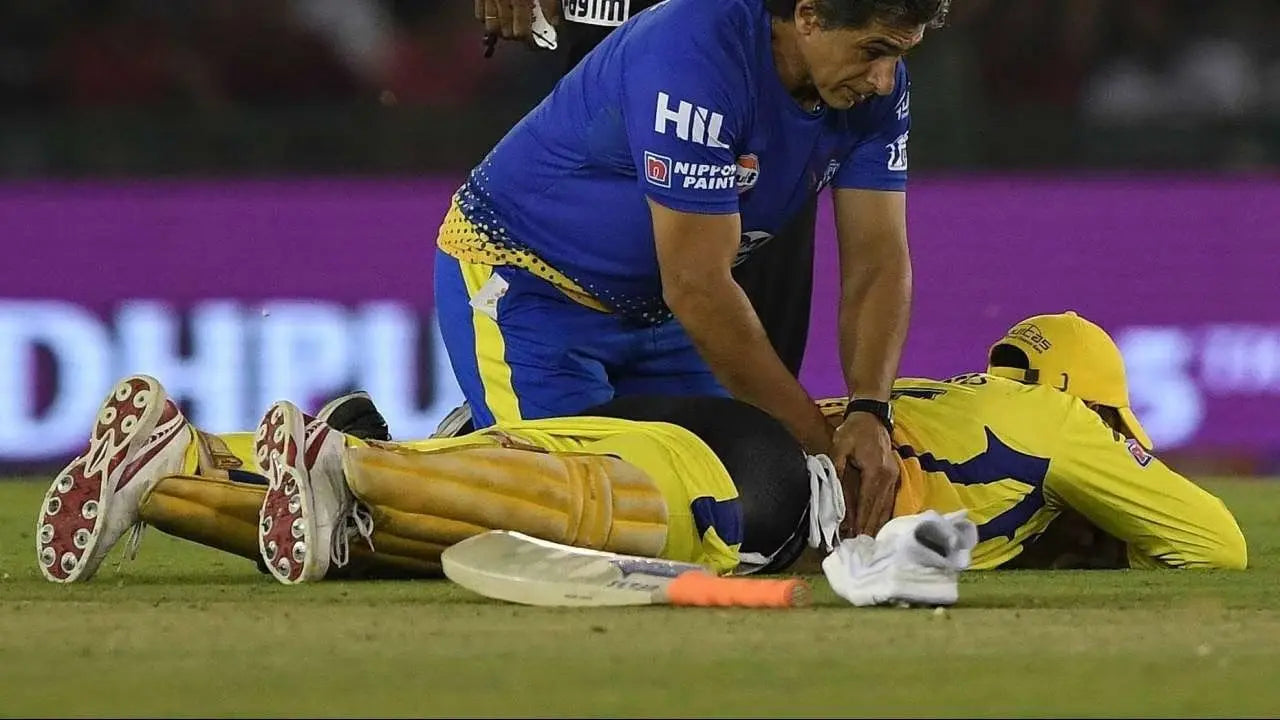
Credit: DNA India
Lower back problems are more common in players who bowl pace. Jasprit Bumrah has been ruled out of any matches for a back injury. When lunging to either bat, bowl, or catch a high flying ball, all cricket players are susceptible to injury to the tendons, ligaments, bones, or nerves in the lower back.
Cricket Back Injuries Reason:
The lower back injuries are typically caused by insufficient exercise prior to the game, improper bowling technique, an increase in training frequency without adequate rest, the length of time spent bowling while playing, repetitive movements while bowling and batting, and defects to bone and muscle caused by an unbalanced diet, dehydration, and illness. An unbalanced body weight that strains the lower back can result from not wearing supportive cricket shoes.
Slip Disc:
A slip disc occurs when one of the rubbery discs that cushion the bones (vertebrae) in the spine slips out of its normal position or ruptures. This can happen due to several reasons like Repetitive Strain, Lifting Heavy Objects, a hard fall or traumatic injury.
Back Injuries Prevention and Treatment:
The right pre workouts, the use of proper batting, bowling, and fielding skills, a strengthening diet and fluid consumption, enough rest, orthotics and insoles, and back supports can all help prevent back injuries. You can determine the most improved techniques for physical performance by speaking with a physiotherapist or cricket sports coach at your academy.
The importance of proper batting protection:
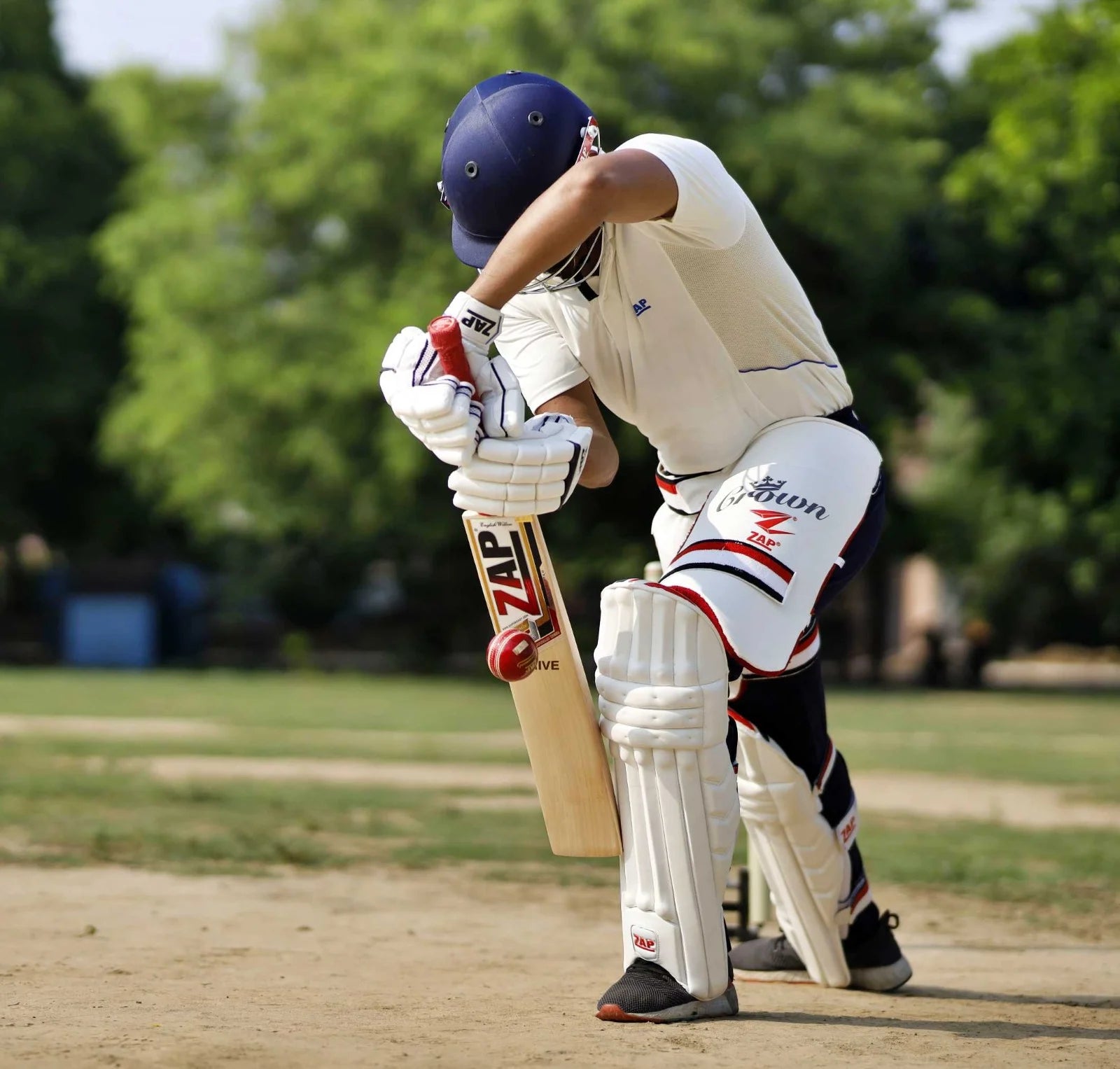
When you get hit by a leather cannon at a speed of about 140 kmph, it sure is going to hurt and cause an injury. Using proper cricket gear is of paramount importance in preventing injuries on the field. Batting gloves provide a secure grip and comfortable protection, reducing the chances of injuries from any blows of the cricket ball. Helmets are essential to protect against head injuries, particularly while facing aggressive bowlers. Batting Pads protect the legs from bruising, and thigh pads offer additional shielding against well-directed deliveries. Wicket keepers, too benefit from specialized gear that ensures swift movements without compromising safety. So, investing in quality cricket gear is not just a matter of comfort; it's a crucial step in safeguarding yourself from injuries that could derail your performance. So, get the best cricket batting pads, wicket keeping pads and thigh pads from ZAP that’ll keep your legs invincible and protect you from everything no matter what!
FAQ:
Q - Why are younger players more prone to overuse and bowling injuries in cricket?
Younger players are more prone to injuries due to their bodies still developing, lack of proper conditioning, and because they might be participating in intense training without adequate rest.
Q - How to prevent cricket finger injuries?
You can prevent finger injuries by investing in high-quality gloves that offer protection against hard-bowled balls, practicing proper technique, and using the right equipment.
Q - Which body parts are most prone to injuries in cricket?
The shoulders, elbows, fingers, and lower body, including hamstrings, ankles, knees, groins, and shins, are the body parts most prone to injuries.
Now that you have learnt about injuries in cricket and how to prevent and treat them better, here are some more articles we recommend reading to take your game to the next level:
Batting Tips and Techniques | How to play the straight drive | How to play the cover drive | How to play the pull shot | Batting Footwork




Thanks for shedding light on the common injuries in cricket and how they can be prevented. As someone who loves the sport, it’s crucial to understand how to maintain optimal physical condition. I found more practical advice on preventing cricket-related injuries and their treatment approaches on https://physioentrust.com/ . Staying informed can really make a difference in a player’s health and performance.
Leave a comment